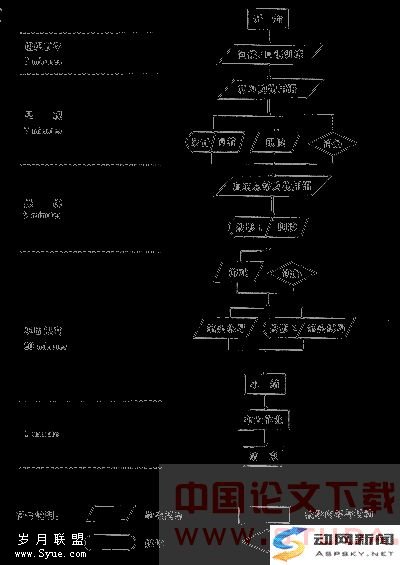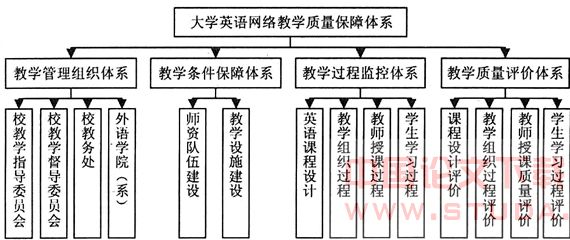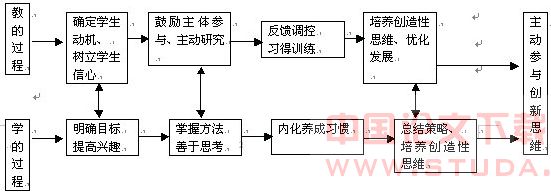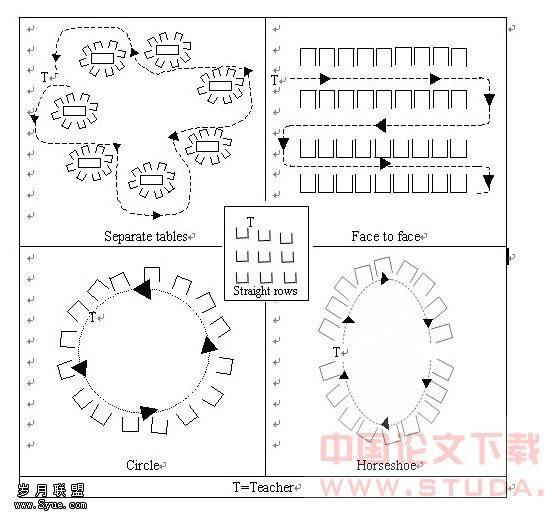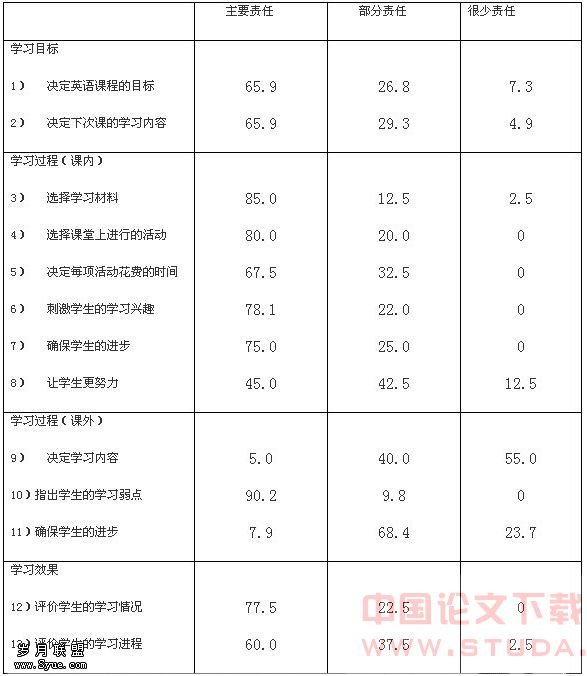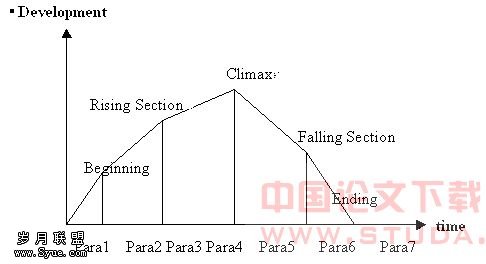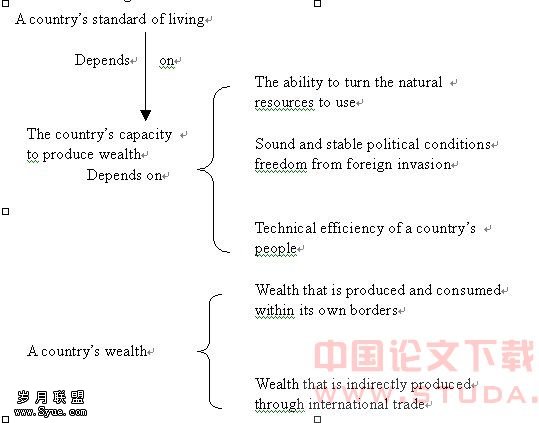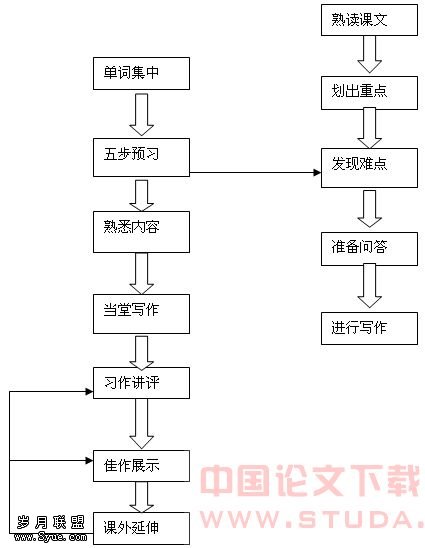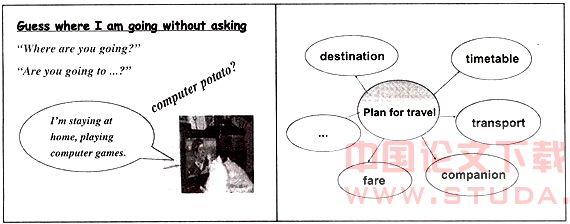浅论中学英语教学中的跨文化意识培养
[Abstract] With the development of globalization,China’s entry into WTO and the coming Olympic Games in 2008, international contacts have become more and more frequent. The society is in great need of personnel who have a good command of knowledge and are able to communicate with people from different countries. How to make English teaching meet the needs of social and economic development has become an urgent task to English teachers. Therefore, developing students’ intercultural communicative competence has been paid more attention to in English teaching. Nowadays, it has been prescribed into the New English Curriculum Standards. Obviously, Middle School English teachers are facing the challenge of exploring appropriate means of culture instruction in their teaching contents. However, because of the testing system, teachers’ academic proficiency, students’ attitude and so on, culture introduction has been ignored in middle school and students’ intercultural competence is poorly developed. Since language and culture are inseparable,one cannot master the spirit of a foreign language without knowing its culture. Culture teaching should be given priority to in English teaching. In the hope of improving culture teaching in middle school English classes, practical principles and effective techniques are suggested. This article proceeds with the understanding of culture, analyses the differences between Chinese and Western cultures, discusses how to help students to learn culture differences at the beginning of English learning and how to relate Chinese and Western culture differences with language differences so as to develop students’ cultural sensitivity and their abilities to use various ways of communication flexibly, so as to enable students to carry out intercultural communication with English.
[Key Words]middle school English teaching; intercultural awareness; intercultural communication; differences in languages and cultures
【摘 要】 随着全球化的,进入WTO,2008年北京奥运会的临近,国际间的交流越来越频繁。社会迫切需要具有跨文化交际能力的全面外交人才。如何使教学迎合社会发展的需求,如何提高学生的跨文化交际能力是对英语教师和目前英语教学的提出的新要求。中学作为英语教学的基础阶段,由于注重学生跨文化意识的培养,新课程标准已经把这部分作为重要内容。中学英语教师面临着文化与英语语言知识教学的新挑战,然而由于我们的测试系统,教师的学术水平及学生的学习方式等问题,中学的文化教学依然很薄弱,学生的跨文化交际能力低下。语言与文化密不可分,不了解英语文化也就不能真正掌握这门语言。文化教学必须在中学英语教学中上升到一定高度。本文从文化的认识入手,分析了中西文化差异,探讨在初中英语教学中如何帮助学生学会透过文化差异现象看本质,如何把中西文化差异和语言差异有机结合起来。培养学生的跨文化意识,增强学生的文化敏感性和灵活运用各种交际手段的能力,从而使学生成功地用英语进行跨文化交际。
【关键词】 中学英语教学;跨文化意识;跨文化交际;文化语言差异
1.Introduction
Professor Deng Yanchang once said,“Learning a foreign Language well does not simply mean mastering its pronunciation,grammar and vocabulary. In fact,the learning of a Language is inseparable from the learning of its culture.”〔1〕The fundamental function of language is to communicate. A successful English teaching is to help language learners cultivate a good communicative ability. But nowadays we also can see that after many years of English study, students still find it difficult to communicate with native English speakers. The reason is that they lack the knowledge of western culture. Therefore, English teachers are facing one problem: furnishing students with the knowledge of culture background and improving their intercultural communicative competence in English teaching. Then cultural awareness indicates that foreign language learners have a good command of cultural knowledge of the target language, a strong competence of adjustment and communication .In addition, they can think and react in the ways as native speakers of that dimensions of culture. It is difficult to cultivate and enhance learners’ cultural awareness although they have well realized the existing differences because they often unconsciously attempt to superimpose their native culture onto the target language, which greatly hinders an effective intercultural communication.[2]
2. The necessity of intercultural awareness cultivation in middle school English teaching
2.1The requirement of syllabus
“Language is system of arbitrary, vocal symbols by means of which the members of a speech community communicate, interact, and transmit their culture.”[3] This definition is given to emphasize that the function of language is not only a tool of communication but also an important vehicle of culture. So learning a foreign language is a process of acquiring the language and its culture for communicating purpose. English syllabus currently points out that the ultimate goal of English teaching is to foster students’ intercultural communicative competence. Culture is the content of language; every language reflects its own culture. People’s language should adapt to the context. What to say, how to say it, when to say it, and to whom to say it are all determined by the underlying beliefs and values.[4]As Wolfson (1983) noted, “In communicating with foreigners, native speakers tend to be rather tolerant of errors in pronunciation or syntax. In contrast, violations of rules of speaking (pragmatic failure) are often interpreted as bad manners since the native speaker is unlikely to be aware of sociolinguistic relativities.”[5] In the new syllabus for Senior Middle School English, it shows that students of Full-time Senior Middle School English not only should grasp vocabularies, grammar, and pronunciation, but also properly grasp the relationship between language teaching and culture understanding.[6] Hence, we should carry out cultural teaching in middle school and improve students’ intercultural awareness.
2.2 The present teaching materials
Nowadays, intercultural awareness and intercultural communicative competence have been prescribed into the New English Curriculum Standards. The newly organized teaching materials of junior and senior middle school involve some western culture, for example, greeting, western festivals, literature, music, body language and so on. Then culture becomes an important part of English teaching. It is unwise, in order to save time, only to teach English with the neglect of cultural introduction. Barriers in English learning sometimes come from the lack of cultural knowledge.
Some teachers have attributed their students’ poor reading and ing comprehension to linguistic deficiencies. They believe that so long as their students grasp the meaning of every word, every sentence, and every text passage, they will have no difficulty in comprehending the whole text. This idea is not correct. English reading materials inevitably convey western culture. When we teach Christmas Day and Thanksgiving Day, some cultural background knowledge of these festivals can help students overcome obstacles in the text and grasp language knowledge better. In addition, many words, in the text book of middle school, have relations with cultural contexts, such as, old, name, dog, pork, beef, lookout, breakfast, and some words to express colors. For example, in the text book “blue” and “green” are not only the meaning of colors, each has its implied meanings. “Blue” in English often associates with unhappy feelings, “in a blue mood” or “having the blues” expresses a sad, gloomy or depressed mood. “A blue Monday” (the first day of week-work or school after a pleasant, happy weekend) has the similar meaning. Also, in English, “green” is also used to indicate a person who lacks experience, or a newcomer who is not familiar with local customs. Language and culture evolve together and interact with each other. According to the New English Curriculum Standards, in middle school, teachers should not neglect the cultural factors existing in English teaching. Definitely the intercultural awareness can’t be neglected in English teaching at middle school.
3. The current situation of intercultural awareness cultivation in middle school English teaching
China has now become a formal member of WTO, Beijing will host the Olympic Games in 2008. What’s more,our country has been taking effective measures to further the opening up and reform policies. Consequently, more and more cooperative and exchange programs will be held between China and foreign countries. There should be more students with intercultural competence to meet this need. It’s necessary to communicate with people from different cultural backgrounds. But what is the result of English teaching in our middle schools? Despite the great amount of time,energy, and money spent on English teaching, it is rare to find a Chinese middle school student who is able to communicate with westerners successfully after six years of English learning. In fact, learning a foreign language well means more than merely mastering the pronunciation, grammar, words and idioms. It also means learning to see the world as the native speakers do.[7] Therefore, language and culture should be taught at the some time. However, there are many problems in intercultural awareness cultivation in middle school.
3.1 Teachers’ attitude
Nowadays, most middle school English teachers still follow the traditional grammar-translation method; they neglect cultural teaching in English teaching. The New Curriculum Standards emphasizes the necessity of developing students’ intercultural competence. However, at present, in the senior middle school the college entrance examination still seriously affect teachers’ teaching idea. It’s most valued by students, teachers as well as the authorities. In order to help students score high on linguistic proficiency, teachers pay a lot of time to explain vocabulary and grammar knowledge in the class. In this case, students have improved their language knowledge, but their intercultural communicative competence has not enhanced. In fact, it has violated English teaching goal and the education for all-around development principle. Mr. Winston Bareback,the foreign language teaching expert of the USA indicated, teaching language without culture is the best way to cultivate a fool with fluent spoken language.[8]Obviously, its consequence is serious. What’s more, some teachers regard cultural teaching as their extra burden. They are not so experienced in culture instruction and not so confident to act as guides. Meanwhile, they don’t have a desire to go on studying; they prefer to let their students to learn cultural knowledge all by themselves. Under this circumstance, intercultural awareness cultivation cannot achieve the ideal effect.
3.2 Students’ motivation
Motivation refers to factors that determine a person’s desire to do something. There is a general assumption that students, who learn English in order to facilitate communication with native English-speaker, are the most strongly motivated. However, most middle school students in China learn English just for the purpose of passing exams; thus, they do not have a strong desire to communicate with people of the target language. So it’s not difficult to understand that they show little interest in English cultural knowledge, but indulge themselves in grammar learning and vocabulary building. Although majority of students are interested in the western culture, they rely on the teacher excessively and fail to search for deep understanding by themselves.
3.3 Students’ poor intercultural communicative competence
Though some teachers attach importance to improving students’ language competence, especially their reading skill, they ignore the differences of cultures in teaching English. Consequently, they fail to provide the students with an introduction of culture of English-speaking countries which lead to the students’ “communication block”. Kramsch’s keen observation should not be unnoticed:
“Culture in language learning is not an expendable fifth skill, tacked on, so to speak, to the teaching of speaking, listening, reading, and writing. It is always in the background, right from day one, ready to unsettle the good language learners when they expect it least, making evident the limitations of their hard-won communicative competence, challenging their ability to make sense of the world around them.”[9]
The following examples show the result of students’ lacking cultural knowledge:
(1) Both Chinese and English have many idioms, but in middle school, English teachers seldom introduce this respect. Consequently, students usually translate idioms with literal meaning which cause many misunderstandings. For example, when students want to describe: “运动会上运动员“个个生龙活虎”, they may say: The athletes on the sports ground are all as lively as dragons and tigers. In Chinese “dragon” is the symbol of “power” and “full of energy”, while in Western country it shows “disaster” and “evil”. If you describe a person as a dragon, it means the person is a Devil. So here it’s more suitable to say: The athletes are full of vim and vigor. In Chinese “dog” is usually used in a derogatory sense such as “走狗”, “狗仗人势”. But in English, it has commendatory sense, e.g. “lucky dog” means “lucky person”, “a Jolly dog” means “a happy man”.
(2) Then take a conversation as another example:
Student :( eager to strike up a conversation and compliment)
Sir, you look very much like the pop star Billy Joel.
Teacher :( flaring up with wide-open eyes)
Nonsense! I don’t look like him.
Quite a lot of Chinese students will feel confused on hearing such a conversation. “Why the teacher becomes so angry at this polite compliment?” Is there any linguistic incompetence revealed in the student’s inaccurate pronunciation or grammatical mistakes? The answer is “No.” Instead of grammatical errors, the student has made a pragmatic failure. There is a major difference between Chinese people and English-speaking people in how to compliment others. For a Chinese, being likened by others to a film star or a famous singer can be taken as a compliment. But the English-speaking people believe that individual identity prevails over interpersonal similarity. The student in the above example transfers his Chinese expression of compliment into English, thus arousing the teacher’s anger. And this is why we say the ignorance of the target language culture is great handicaps in the acquisition of that language.
(3) Now let’s look at a student’s writing. Moreover, when middle school students write an English thesis, they frequently use Chinese thinking mode to express.
If students were asked to write a composition on “My Parents and I”, many students may begin like this:Most parents love their children. They take good care of their children. They care about their studies and would like to do all they can to help them. Some parents love their children too much and allow them to do anything they like. Some parents are strict with their children. My parents love me but are strict with me...”
In fact, “the difference between the Chinese and western modes of thinking plays an important part in writing. Chinese are accustomed to thinking in a spiral way, while English and Americans in a linear way. This difference in thinking often leads to misunderstanding.”[10] In writing, Chinese students like to explain many things at first, finally come to the subject. Sometimes a student’s composition is perfect in terms of grammar and logic. But when a foreigner read it he or she may be confused. They may think that the subject of Chinese student’s thesis is unclear. Because when they are writing they like to “come straight to the point”.
Generally speaking, the current situation of intercultural awareness cultivation in middle school is still far from being satisfactory. Most students are short of the cultural sensitivity and lack intercultural communicative ability. In this condition, they are unable to meet the needs of the political and economic development of the country.
4. Cultivating students’ intercultural awareness in middle school English teaching
4.1. Principles of intercultural awareness cultivation
Just knowing the role of cultural knowledge is not enough to improve students’ communicative competence. The key problems are concerned with the content and approach of intercultural awareness cultivation, that is, how to achieve the improvement. Thus we should follow these principles while conducting cultural teaching in middle schools: (1) The Principle of grading; (2) The Principle of adaptability; (3) The Principle of Practicability[11]
4.1.1 The principle of grading
Grading principle means the English cultural content should be selected and taught step by step according to students’ language levels and ability. The cultural information can not exceed students’ comprehensive ability.
4.1. 2The principle of adaptability
In fact, English culture is so extensive in notion that we are unable to cover everything about in middle school time. Adaptability means when the teacher analyzes the texts, some cultural knowledge information which is related to the text should be introduced. At present, teachers in the middle school are used to spending much time in vocabulary, grammar and sentence structure. So the cultural acquainting is limited and even eliminated. To overcome this problem, teachers can encourage students to read after class.
Primarily, according to the demands of the principle practicability, the acquainted cultural contexts must be closely connected with the language contents and can be used in students’ daily communication. So it can excite students’ interest to learn English culture.
4.2. Contents of intercultural awareness cultivation
According to Stern cultural teaching should include six main aspects:(1)Places; (2)individual person and way of life; (3)People and society in general(4)History; (5)institution; (6)art, music, literature and other major achievements.[12]
Contents of intercultural awareness cultivation refer to all aspects of culture, but what should we teach in middle school? Middle school students are at a special age period. At this stage, it is hard for them to tell what is good and what is bad. What’s more, they don’t have enough time, so it is impossible for them to learn all the cultures of English-speaking countries. According to the New English Curriculum Standards for middle school and the analysis of the middle school English textbooks, the writer advises that the contents of intercultural awareness cultivation in middle school should focus on the following aspects:
4.2.1 Ways of addressing
In middle school English class usually begin with “Good morning, teacher.” In fact, this is Chinese form of address by using of a person’s title, office, or occupation, such as 黄局长,林经理,马校长. But English native speakers seldom address others like this. The most frequently used titles are Mr. (for adult males), Mrs. (for married women), Miss (for unmarried women), Ms (for women whose marital status are unknown or is not indicated). There are some less frequently used titles such as president, prime minister, governor, mayor, doctor, judge, lawyer, and professor.[13] So we’d better say “good morning, Sir/Madam or Good morning, Mr. / Mrs. Wang”. In junior middle school, students can learn a lot about English names. A lot of English people have three names: a first name, a middle name, and a last name. Their family name comes last. They do not use their middle name often. So “John Henry Brown” is usually “John Brown”. People do not use Mr., Mrs., Ms or Miss before their first name. They use them with their family name. So we can say “John Brown” or “Mr. Brown”, but we can never say “Mr. John”. In China, we often address members of our family, relatives or close neighbors as “ 二 哥、三姐、四婶、周大伯” which should not be carried over into English. In English, the name alone would be enough. It should be mentioned that in English “Uncle” and “Auntie” or something like that should be followed by a given name, not a family name. For example, Uncle Tom and Aunt Mary. Therefore, “Uncle Wang” is a way of Chinese thinking style in English.
4.2.2 Greeting
In everyday life, people always greet each other when they meet people coming from different cultural backgrounds. Proper greetings are sure to be a good beginning of a communication, and they can help us build up a good social relationship. The first lesson of JEFC often deals with how to greet. That is, “Good morning!” or “hello/Hi!” when meeting in the morning, instead of Chinese saying” “Have you had breakfast yet?” For westerner the greeting might mean this: “I haven’t either. Come on, let's go together and get something to eat.” or it could indicate an invitation to a meal. When we Chinese meet for the first time, there is no special expression for the occasion. But as for most English-speaking people, when they meet for the first time, they often say something like “How do you do?” and “Nice to meet you.” And when they part, they are expected to remark: “It’s nice meeting you.” or “Very nice talking with you.” or something similar.
4.2.3 Compliments and thanks
It is quite common for people to exchange compliments in English speaking countries and in China. However, there are cultural differences between English and Chinese compliments and responses. In middle school English teaching of daily conversations, compliments and their responses deserve to be studied.
Cultural differences are also evident in the ways of responding to others’ compliments and gratitude. It is noted that people from English-speaking countries tend to verbalize their gratitude and compliments more than Chinese speakers and that they tend to accept thanks and compliments more than Chinese. When Chinese people hear compliments like “You are so beautiful.” or “You speak excellent English.” They may feel embarrassed and would say “No, no” to decline the expression of gratitude. However, a native English speaker will accept the complement by giving positive response like “Thank you” or “I’m glad to hear that”. To them, accepting compliments is not an expression of pride or impoliteness; it’s almost dishonest to deny an expression of sentiment
What's more, “Thank you” is used more widely in English-speaking countries than in China even between members of the family, even for minor favors like borrowing a pencil, asking directions, passing an apple, etc. In JEFC, we can find this dialogue:
Han Mei: Good evening, Lucy and Lily.
Twins: Thanks for asking us.
Han Mei: Would you like a moon-cake?
Lucy: Yes,thank you.
Han Mei: Would you like another one?
Lucy: May I? Yes, Thanks.
Han Mei: How about another one?
Lucy: Oh no, Thank you.
From the example above, we can know how often English-speaking people say “thanks”. On the contrary, in China, such polite expressions are often omitted, especially among close friends and family members. Many Chinese often regard the frequent use of “thank you” by English-speaking people unnecessary and even tiresome.
4.2.4 .Privacy and taboos
Some words or expressions are to be avoided because of the tradition or social custom. And the topics talked about must be carefully chosen to suit the speakers and the setting. This may not be easy to do even in one’s mother tongue,and therefore in a foreign language it can be even more difficult. It is important to consider cultural factors in middle school English conversations. In student’s book, there is a dialogue between Meimei and Mrs. Green:
Meimei: Hello! What's your name?
Mrs. Green: My name is Mrs. Green.
Meimei: How old are you?
Mrs. Green: Ah. It's a secret.
English people place a high value on privacy. To most British and Americans, age is one of the things being considered improper to ask of a stranger especially a lady. Besides age, one’s income, marital status, political attitude and religion are also considered as privacies in English culture. So in middle school English teaching we should guide the students to avoid the following topics when talk with westerners:
“How old are you?” “How much do you earn?” “Are you married or single?” “What is your religion?” “How much did that dress cost you?” “How many children do you have?”
4.2.5 Miscellaneous social amenities
(i) The term “please”
The English term “please” is usually regarded as equivalent to “请” in Chinese. However, they are not used in exactly the same way. When asking another person to enter the room or to get in a car first, the normal expression is “After you” rather than ““You go first, please”. And “Help yourself” is customary when urging someone to start eating, or to take more of the food.[14] Both Chinese and English have expressions for apologies and remarks preceding a request, for example, there are“对不起,请……” and “Excuse me, please...” On the whole, they are quite similar. However, there are certain differences even among these. “Excuse me.” is a general term preceding a request or interruption. In Chinese, however, there are different terms:“劳驾”when asking a favor or requesting a person to do something; “借光” and “请让一让”, when asking a person to step aside or make room;“请问” When asking for information or making a query. If not knowing this distinctions students tend to use “对不起” for all such situations . Then mistakes will occur. For example:
A: Would you like to go to the flower show?
B: Excuse me, but I’m not free
Here we’d better have students know that for refusal to invitation, “I’d love to, but…” is proper.
(ii) Gift giving and responses
Gift giving is very important in our daily life. It is necessary to introduce some knowledge about gift giving in western country to middle-school students. People in English speaking countries give gifts on a number of occasions: at Christmas and other important holidays, at weddings, on birthdays, on a visit to a friends and so on. However, they normally give only small gifts (a card, a bunch of flowers, or a bottle of wine) to good friends. Gifts from casual acquaintance or expensive gifts will make them uncomfortable, for they will not know how to return the kindness. When they receive a gift, they always unwrap it in the giver’s presence and say a few good words about it, in order to let the giver know that his or her gift is appreciated.[15]
4.3. Approaches of intercultural awareness cultivation
Teaching English is also teaching English culture. The importance of teaching culture has been discussed a lot and widely recognized. Now how to cultivate intercultural awareness in middle school is also a problem all English teachers confront. The writer suggests the following approaches.
4.3.1 Intercultural awareness cultivation in classroom
Classrooms are middle school students’ main study places, so how to carry out intercultural awareness cultivation effectively in an English classroom is vital to the teaching.
(i)Role play
Role-play is a frequently adopted classroom item, which involves the students in simulated intercultural communication situations in daily life such as greetings, telephone talk, and concern-expressing, present-giving and so on. It arouses students' great interest in classroom interaction .It does not only help the students understand cultural differences, experience foreign culture, but also provides opportunities for oral communication. It is very popular with English beginner.[16]
Different talking topic has the different social meaning in the different culture. In middle school English teaching material there are dialogues in each unit, and many talking topics are involved. Teachers should make full use of these topics to cultivate students’ intercultural awareness. We can require students act out a dialogue by role play. If an English teacher wants to present students with the general practice of eating out in a restaurant in western,the best way is probably to provide students with English introductions about how to find a table reserved, how to order and how to pay and so on, which can then be displayed in students’ role- play. This will not only show how well the students understand them, but also give them a vivid impression. In textbook many texts can also be acted alike: The Necklace, Jobs, Body Language, First Aid, At the Tailor’s, A Famous Detective, and so on.
(ii) Comparisons and contrast
When we carry on the language knowledge teaching, cultural should be put into it. Teachers may summarize some vocabularies and idioms which have cultural connotation. And use direct explanation method and comparative method to show students the difference between Chinese and English. Therefore, teachers should make comparisons and contrast between cultures, which may help students to understand foreign culture and their native culture on the basis of previous experience and new knowledge. Only by comparison and contrast can one distinguishing acceptable culture from unacceptable culture, thus preventing students from accepting the target culture uncritically.
(iii)Audio-visual Approach
The audio-visual approach means to guide students to experience the cultural content of English-speaking countries by the use of various audio-visual aids, such as pictures, tapes, videos, computers, newspapers, magazines and so on. For instance, when teaching Disneyland in Unit 1 in SEFC Students’ Book 2A, teachers can show students some pictures of Mickey Mouse and Donald Duck to arouse students’ curiosity. When teaching Christmas Day, Thanksgiving Day or Body Language films and TVs can be shown to help students to understand the cultural behaviors of Westerners: what they eat; what they wear; what houses they live in; how they make friends; what traditional activities they have on their important festivals.
4.3.2Intercultural awareness cultivation outside class
Middle school students show interests in many things outside class. For example, reading, ing to the music, seeing films, and so on. Therefore we should make full use of them so as to arouse students’ study interest, and help increase students’ intercultural awareness.
(i)Authentic materials
Using authentic sources from the native speech community helps to engage students in authentic cultural experiences. Sources can include films, news broadcasts, photographs, and television shows, Web sites, and magazines, newspapers, restaurant menus, travel brochures, and other printed materials. Teachers can adapt their use of authentic materials to suit the age and language proficiency level of students. For example, even at the beginning students can watch and listen to video clips taken from a television show in the target language and focus on such cultural conventions as greetings. The teacher might supply students with a detailed translation or give them a chart, diagram, or outline to complete while they listen to a dialogue or watch a video, then engage them in discussion of the cultural norms represented in the segments. Students might describe the behaviors they observe and discuss what are similar to their native culture and what are not and determine strategies.
(ii)Communicative activities
Organizing English corners, English party, English Sharon and so on. These activities can provide students with the opportunity to communicate in English. So the students can experience the western culture to a great extent, which is good for them to improve their intercultural awareness and obtain the intercultural competence.
5. Conclusion
On the whole, the relationship between language and culture determines the importance of culture teaching. With the increase of exchange between China and Western countries resulting from the reform and opening up program, people have come to realize that due to the lack of profound knowledge of the Western culture, “cultural shock” will appear now and then when Chinese people communicate with Westerners. Culture plays a very important role in English teaching. Thus it is required to foster students’ intercultural awareness and improve their cultural understanding competence. What’s more, the intercultural communicative ability must be developed at an early age. Middle school is the beginning of English learning ,therefore, English teachers should try their best to increase students’ cultural awareness, so that they will notice the differences when exposed to the target language and culture, besides, they will be able to find out for themselves what to say or do and what not to say or do . Filtering cultural teaching into English teaching can bring about new spirit to middle school English teaching, and it can also promote the quality education.
Bibliography
[1] Fan Huping. Jiang Hongxia. Culture and English Language Teaching[J].甘肃学院学报(社科版), 1997, 2. P80
[2] Huang Manmei. Intercultural Communication and Cultural Teaching in Middle School English Classes[D].江西师范大学, 2004. P9
[3] 王瑞芳. A Consideration on Language · Culture · Communication[J].陕西师范大学学报(权学社会版), 2000, 29. P267
[4] 周琛.大学教学中的跨文化意识培养[D].哈尔滨工程大学,2003. P15
[5] 同[2] P10
[6] 白春. 中学英语教学中文化知识输入方式的探讨[D].陕西师范大学, 2002. P1
[7] Yang Kun. Cross-Cultural Competence and English Language Teaching[J].广西师范大学学报, 2002, 1. P174
[8] He Aihua. Study on Cultivating Awareness of Cross-Culture in English Teaching[J].华东师范大学学报,2000, 5. P118
[9] Claire Kramsch. Context and Culture in Language Teaching[M].上海:上海外语教育出版社, 1999. P1
[10] 张涛.Cultural Background in English Teaching[J].内蒙古大学学报,2003, 3. P94
[11] 同[6]P6
[12] 刘晓玲. 初中英语文化教学探讨[D].西南师范大学, 2004. P23
[13] 王振亚.语言与文化[M].北京:高等教育出版社,1999. P139
[14] 同[13]P164
[15] 同[13]P165
[16] 同[2]P40
